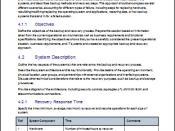The purpose of this paper is to examine Business Continuity Management in the tourism market. The paper also examines the service recovery, failure prevention and other strategies that are use to prevent service failures arising from internal and external factors in the organisations. The paper discusses the range of unexpected potential disasters that might hinder and destroy the growth of businesses. The result suggests the needs for adequate disaster recovery and an awareness of Business Continuity Planning.
In today's ever changing tourism industry, Business Continuity Management has become the paramount topic of many travel and tourism companies. The tourism industry is highly sensitive to natural and man-made disasters where the ability to manage crises is an important capability (UNWTO, 2007). Companies that overlook the significance of Disaster Recovery (DR) and Business Continuity Planning (BCP) could suffer the consequences of losing their businesses, as two out of five organisations that experience a disaster are out of business within five years (Wheatman, 2001).
However, the operation of a business environment can be effected by both internal and external failures (Pitt and Goyal, 2004). According to Faulkner (2001), external failure could lead to disasters and it is difficult to predict the exact form and timing of potential threats to an operation hence, the event will be more catastrophic. On the other hand, crises are caused be internal failures which can be partially controlled.
In relation to internal failures, every company encounters service failure and it is by responding to these service failures in a correct manner that can enhance customer retention (Maxham, 1999) as a company's response to a service failure can further upset a customer more than the initial failure (Severt, 2002). Therefore, companies should take the golden opportunity and use service recovery 'paradox' to turn an unsatisfied customer to a...


